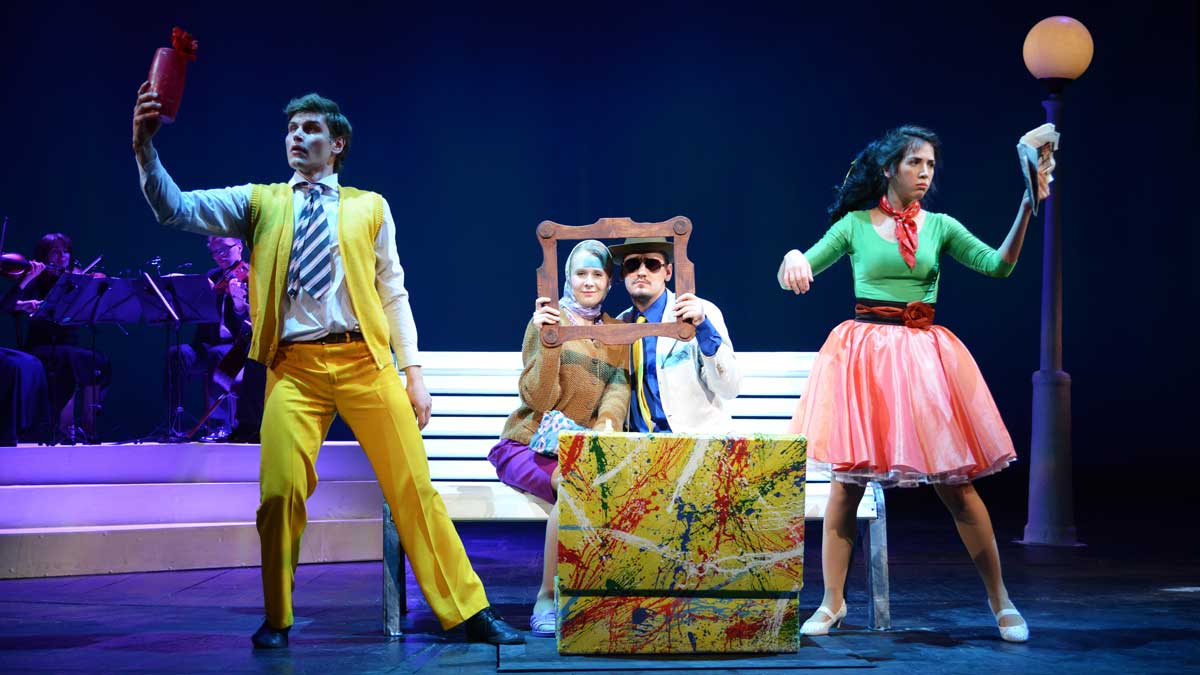 Image: Andrys Lukowski (Adobe Stock)
Image: Andrys Lukowski (Adobe Stock)
Author: VANAS
Why Animators Are Actors
In animation, the lines between artist and actor blur. Animators are performers who breathe life into characters, making audiences laugh, cry, and everything in between. But what exactly makes animators similar to actors? Let’s explore the transformation of how animators become actors to create captivating and emotionally stories.
VANAS Online Animation School offers Animation, Visual Effects, and Video Games programs at VANAS https://www.vanas.ca to launch your career.
Table of Contents
- Eliciting Emotions
- Engaging Their Audiences
- Making the Audience Forget They Are Watching an Animated Character
- Connecting with the Audience
- Making the Audience Laugh, Cry, and More
- Taking Acting Classes
- Studying Stanislavsky
- Becoming Uninhibited
- Recording Video References
- Analyzing Great Actors
- Frequently Asked Questions
Eliciting Emotions
Imagine you’re sitting in a dark theater, popcorn in hand, and the screen flickers to life. Within moments, you're deeply invested in the story of an animated character. This is no accident; it's the result of animators expertly eliciting emotions. Just like actors, animators must understand the subtle art of conveying emotions through their characters. They study facial expressions, body language, and the nuances of human interaction to create characters that resonate with the audience.
Engaging Their Audiences
A great story is nothing without an engaged audience. Animators use their understanding of acting to draw viewers in, making them care about the characters and their journeys. By studying the principles of acting, animators learn how to capture and hold the audience's attention, much like a skilled actor on stage or screen. This engagement is vital for the success of any animated film or series.
Making the Audience Forget They Are Watching an Animated Character
One of the highest achievements in animation is making the audience forget they're watching an animated character. When characters feel real, the audience becomes fully immersed in the story. This requires animators to add lifelike qualities and believable actions. The goal is for the audience to see the character as a living, breathing entity, not just a collection of pixels or drawings.
Connecting with the Audience
Establishing a connection with an audience is at the heart of any great performance, whether in live-action or animation. Animators must find ways to connect with their audience on an emotional level. This involves creating characters that viewers can relate to and root for. Whether it's a quirky sidekick or a heroic protagonist, the connection between character and audience is what makes animation so powerful.
Making the Audience Laugh, Cry, and More
Think about your favorite animated movies. Chances are, they made you feel a range of emotions. Animators are tasked with the challenge of making their audience laugh, cry, feel sad, or even angry. This emotional roller coaster is achieved through a deep understanding of acting techniques and human psychology. Animators must know how to time a joke, build suspense, and create moments of emotional impact.
Taking Acting Classes
Many animators take acting classes to hone their skills. These classes teach them how to think and move like an actor, which is invaluable when bringing animated characters to life. By experiencing what it's like to be an actor, animators gain a deeper understanding of performance and emotion, which they can then apply to their animation work.
Studying Stanislavsky
The Stanislavsky method, developed by Konstantin Stanislavsky, is a system of acting that emphasizes the psychological and emotional aspects of performance. Animators who study Stanislavsky learn how to delve deep into their characters' minds, understanding their motivations, desires, and fears. This method helps animators create more nuanced and realistic characters.
Becoming Uninhibited
Great acting requires a level of inhibition that allows performers to fully embody their characters. The same goes for animators. They must be willing to let go of their own reservations and fully immerse themselves in the character they are animating. This uninhibited approach leads to more genuine and compelling performances.
Recording Video References
Animators often record themselves or others acting out scenes to use as reference material. These video references provide a real-world basis for their animation, ensuring that movements and expressions are accurate and lifelike. This practice is a direct link between animation and live-action performance, highlighting the animator's role as an actor.
Analyzing Great Actors
To improve their craft, animators study the work of great actors. By analyzing performances in movies and theater, animators can learn about timing, expression, and body language. This analysis helps them understand what makes a performance compelling and how they can incorporate those elements into their animation.
VANAS Online Animation School offers Animation, Visual Effects, and Video Games programs at VANAS https://www.vanas.ca to launch your career.
Frequently Asked Questions
Why do animators need to study acting? Understanding acting helps animators create more believable and emotionally resonant characters.
How do animators learn to convey emotions? Animators study human behavior, take acting classes, and use video references to understand and replicate emotions.
What is the Stanislavsky method? The Stanislavsky method is an acting technique that emphasizes psychological and emotional authenticity in performances.
Why do animators record video references? Recording video references helps animators ensure that their characters' movements and expressions are accurate and lifelike.
How does studying great actors help animators? By analyzing great actors, animators learn about timing, expression, and body language, which they can incorporate into their animation.
VANAS Online Animation School offers Animation, Visual Effects, and Video Games programs at VANAS https://www.vanas.ca to launch your career.
Through their understanding of emotion, engagement, and performance, animators create characters that resonate deeply with audiences. Whether they're making us laugh, cry, or cheer, animators use the skills of actors to bring their creations to life in ways that are both magical and profoundly human.







